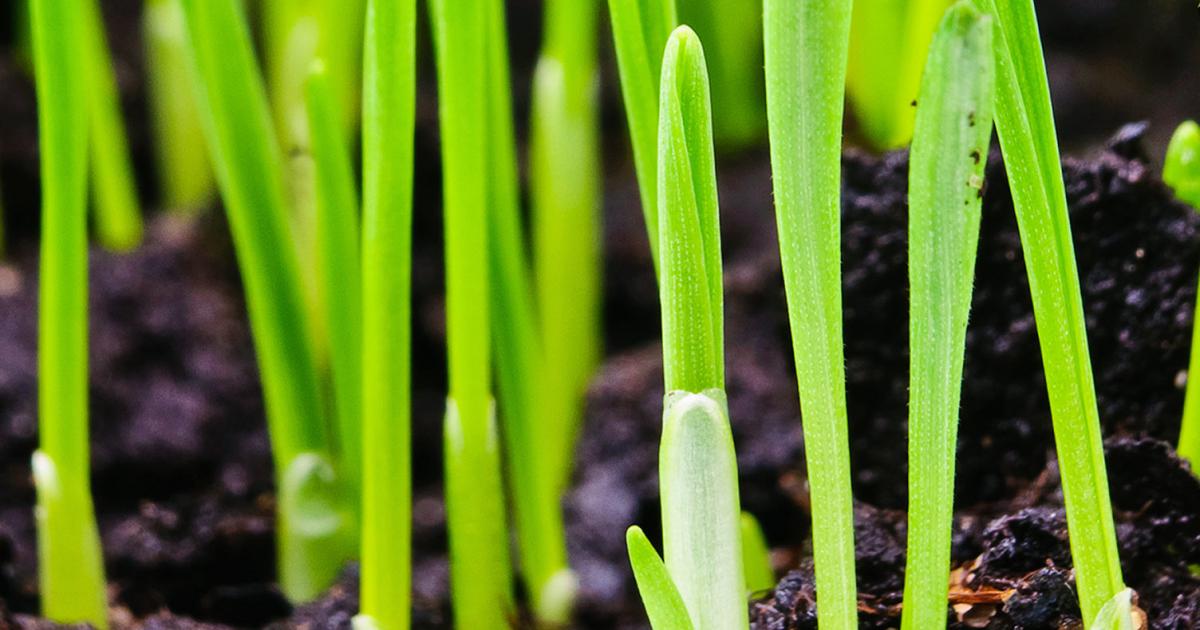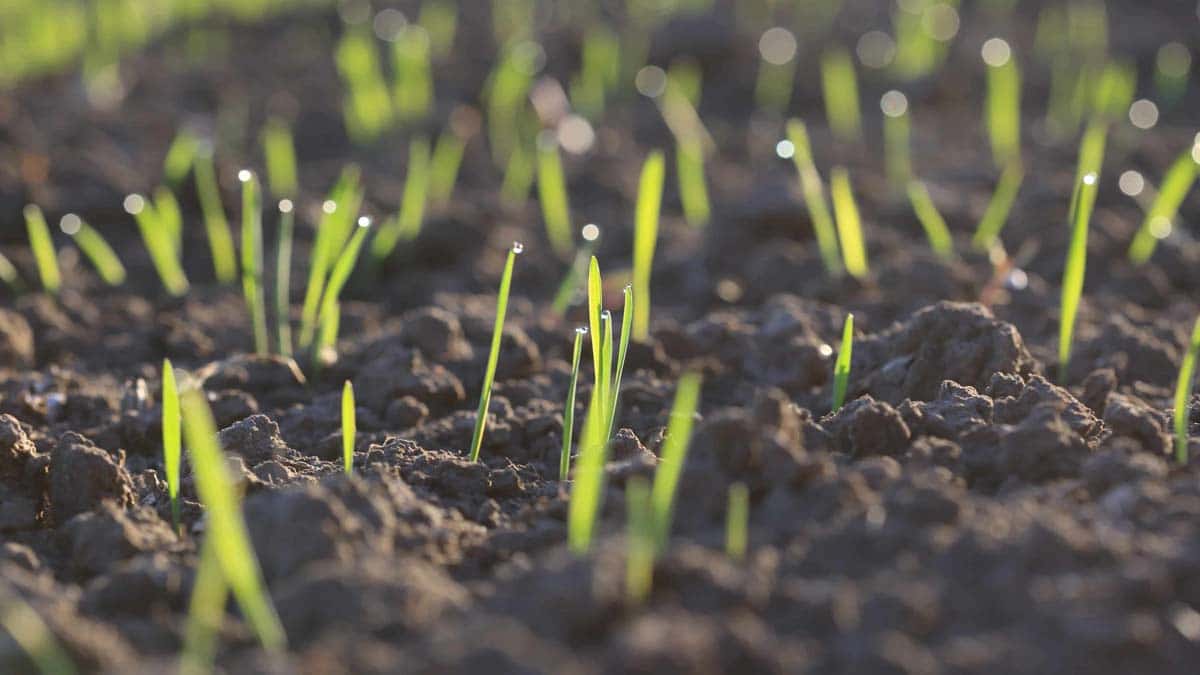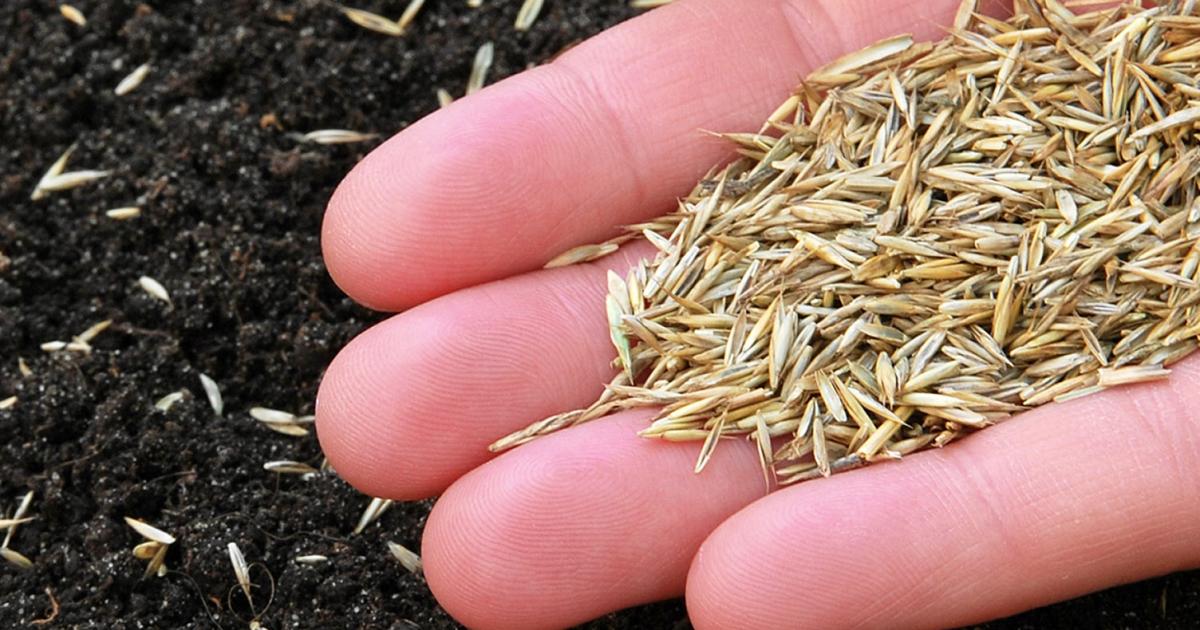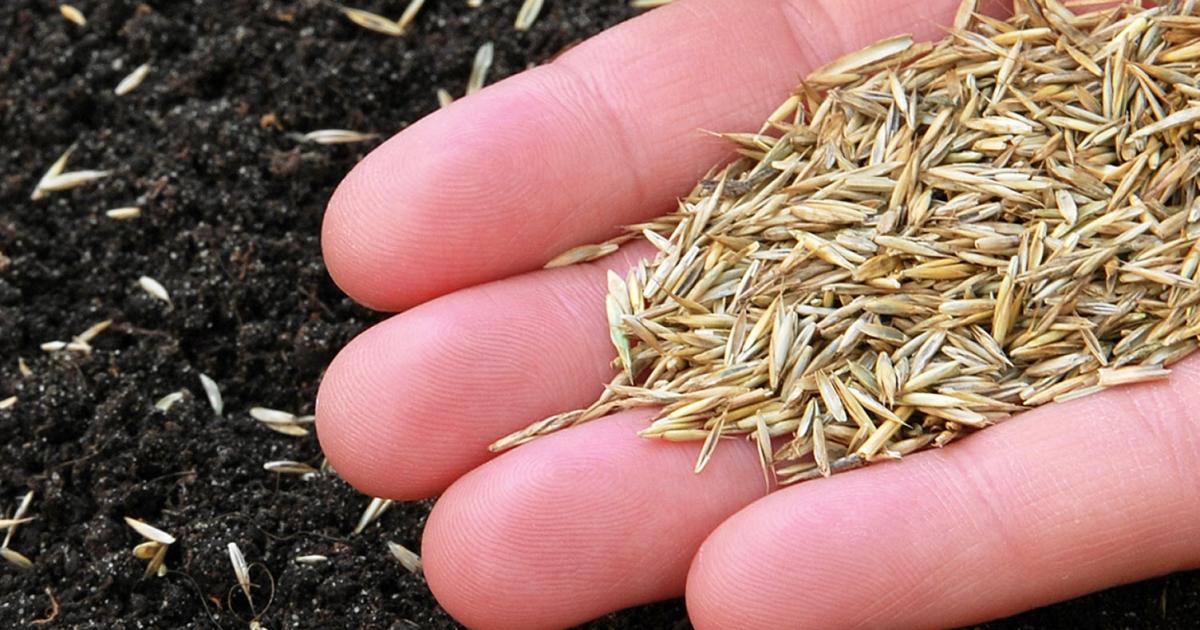When to Sow Grass Seed in the UK: Don’t Miss These Prime Windows! Transforming your garden into a lush, green oasis requires careful planning, and timing is everything. In the UK, the ideal time for sowing grass seed is during the spring and autumn months, offering unique advantages and disadvantages for each season.
Understanding the nuances of these prime windows, along with the critical steps of soil preparation and seed selection, is essential for achieving a thriving lawn.
This guide explores the optimal sowing periods, delves into the intricacies of soil preparation, and provides valuable insights into choosing the right grass seed for your needs. Whether you’re a seasoned gardener or a novice enthusiast, this comprehensive resource equips you with the knowledge to cultivate a beautiful and resilient lawn.
Ideal Time for Grass Seed Sowing in the UK
Successfully establishing a lush lawn in the UK depends heavily on choosing the right time to sow your grass seed. There are two main sowing windows: spring and autumn. Each window offers distinct advantages and disadvantages, influencing the success of your lawn.
Spring and Autumn Sowing Windows
The best time to sow grass seed in the UK is either in spring or autumn. This is because these periods provide optimal conditions for seed germination and establishment.
Spring Sowing
- Advantages:
- Warmer temperatures stimulate faster germination.
- Longer daylight hours provide more energy for growth.
- Less competition from weeds, allowing seedlings to thrive.
- Disadvantages:
- Risk of dry weather, especially in late spring, can hinder germination.
- Potential for pest and disease problems, particularly during hot, humid weather.
Autumn Sowing
- Advantages:
- Cooler temperatures and higher humidity promote better germination.
- Soil is generally wetter, providing adequate moisture for seed establishment.
- New seedlings have a chance to develop strong roots before winter.
- Disadvantages:
- Slower germination rates due to cooler temperatures.
- Risk of frost damage to newly established seedlings.
- Limited time for establishment before winter arrives.
Best Sowing Months
The following table provides a breakdown of the best sowing months for each window, considering the typical climate conditions in the UK:
Sowing Window |
Best Sowing Months |
|---|---|
Spring |
March
|
Autumn |
September
|
Impact of Climate and Soil Conditions
The success of grass seed germination is greatly influenced by climate and soil conditions.
Climate
- Temperature:Grass seeds typically germinate best at temperatures between 15°C and 25°C. In spring, warmer temperatures promote faster germination, while in autumn, cooler temperatures and higher humidity encourage better seed establishment.
- Rainfall:Adequate moisture is crucial for seed germination. Regular rainfall during the sowing period is essential, especially during the spring when the weather can be unpredictable.
- Sunlight:Most grass varieties require at least six hours of sunlight per day for optimal growth. Choose a location that receives ample sunlight, particularly during the initial establishment phase.
Soil Conditions
- Soil Temperature:The soil temperature should be warm enough to encourage germination. In spring, the soil should be at least 10°C, while in autumn, the soil should be above 5°C.
- Soil Moisture:The soil should be consistently moist but not waterlogged. Excessive moisture can hinder germination and root development.
- Soil pH:Most grasses thrive in a slightly acidic soil with a pH range of 6.0 to 7.0. You can adjust the soil pH by adding lime or sulfur if necessary.
- Soil Structure:The soil should be well-drained and free of compaction. Compacted soil restricts root growth and can hinder seed germination.
Preparing the Soil for Grass Seed: When To Sow Grass Seed In The UK: Don’t Miss These Prime Windows!

A well-prepared soil is crucial for successful grass seed germination and establishment. The right soil conditions provide the ideal environment for roots to develop and thrive, ensuring a healthy and lush lawn.
Testing Soil pH
The pH of your soil significantly impacts the availability of nutrients for your grass. An ideal pH range for most grasses is between 6.0 and 7.0. To test your soil pH, you can purchase a soil testing kit from a garden center or send a sample to a laboratory.
Adjusting Soil pH
If your soil pH is too acidic (below 6.0), you can raise it by applying lime. Conversely, if the pH is too alkaline (above 7.0), you can lower it with sulfur. The amount of lime or sulfur needed depends on the soil type and the desired pH level.
Preparing the Soil
Here’s a step-by-step guide to prepare your soil for grass seed sowing:
1. Clear the Area
Remove any existing vegetation, debris, and large rocks from the area where you plan to sow grass seed.
2. Tilling the Soil
Use a tiller or garden fork to loosen and aerate the soil to a depth of 6-8 inches. This allows for better root penetration and drainage.
3. Weeding
Remove any existing weeds, including their roots, to prevent competition for nutrients and water.
4. Leveling the Soil
Use a rake or a leveling tool to create a smooth and even surface. This ensures consistent seed depth and promotes uniform germination.
Soil Types and Preparation Methods
| Soil Type | Preparation Methods ||—|—|| Clay |
- Deep tilling to improve drainage
- Adding organic matter like compost to improve structure |
| Sandy |
- Adding organic matter like compost to improve water retention
- Leveling to prevent seed from being blown away |
| Loamy |
- Tilling to loosen the soil
- Raking to create a smooth surface |
“Preparing the soil is the foundation for a healthy lawn. By investing time and effort in this crucial step, you set the stage for a lush and thriving green space.”
Choosing the Right Grass Seed
Choosing the right grass seed is crucial for establishing a healthy and thriving lawn. The type of seed you select will determine the appearance, texture, and resilience of your lawn.
Different Types of Grass Seed
The most common types of grass seed used in the UK are:
- Perennial Ryegrass:This is a fast-growing and durable grass that is ideal for high-traffic areas. It is also relatively low maintenance and tolerates a wide range of conditions.
- Fine Fescue:This type of grass is known for its fine texture and ability to thrive in shady conditions. It is also drought-tolerant and requires less mowing than other grasses.
- Creeping Red Fescue:This grass is a good choice for lawns that receive a moderate amount of shade. It is also drought-tolerant and has a good wear tolerance.
- Kentucky Bluegrass:This is a popular choice for lawns in the UK, known for its deep green color and ability to form a dense, lush lawn. However, it can be more challenging to establish and requires more maintenance than other grasses.
- Bentgrass:This type of grass is often used on golf courses and other high-quality lawns. It is known for its fine texture, excellent wear tolerance, and ability to withstand heavy foot traffic. However, it can be more difficult to maintain and requires more frequent mowing.
Benefits of Using a Seed Mix
Using a seed mix is often recommended for a more resilient lawn. Here are some benefits:
- Improved Wear Tolerance:Mixing different grass types can help create a lawn that is more resistant to foot traffic, pet activity, and other wear and tear.
- Enhanced Disease Resistance:A diverse lawn is less susceptible to diseases that can affect a single type of grass.
- Improved Drought Tolerance:Different grass types have different drought tolerance levels. Mixing them can help ensure that your lawn stays healthy even during dry periods.
- Better Shade Tolerance:By including shade-tolerant grasses in your mix, you can ensure that your lawn thrives even in areas that receive less sunlight.
Comparison of Grass Seed Types
| Grass Type | Characteristics | Growth Habit | Maintenance Needs ||—|—|—|—|| Perennial Ryegrass | Fast-growing, durable, low maintenance, tolerates a wide range of conditions | Forms a dense, lush lawn | Moderate mowing, fertilization, and watering || Fine Fescue | Fine texture, shade-tolerant, drought-tolerant, low maintenance | Forms a fine, delicate lawn | Low mowing, minimal fertilization, and infrequent watering || Creeping Red Fescue | Shade-tolerant, drought-tolerant, good wear tolerance | Forms a dense, medium-textured lawn | Moderate mowing, fertilization, and watering || Kentucky Bluegrass | Deep green color, forms a dense, lush lawn | Forms a dense, lush lawn | High mowing, fertilization, and watering || Bentgrass | Fine texture, excellent wear tolerance, withstands heavy foot traffic | Forms a fine, dense lawn | High mowing, fertilization, and watering |
Selecting the Right Seed Mix for Different Lawn Types
The best grass seed mix for your lawn will depend on its specific needs and conditions.
- For high-traffic areas:A mix of perennial ryegrass and creeping red fescue is a good choice. These grasses are durable and can withstand heavy foot traffic.
- For shady areas:A mix of fine fescue and creeping red fescue is ideal for lawns that receive less sunlight. These grasses are shade-tolerant and can thrive in these conditions.
- For drought-prone areas:A mix of fine fescue and creeping red fescue is also a good choice for drought-prone areas. These grasses are drought-tolerant and can survive with less water.
- For lawns with specific requirements:You can also find seed mixes specifically designed for lawns with specific requirements, such as lawns for pets, lawns for children, or lawns with a specific aesthetic appeal.
Sowing Grass Seed Techniques
There are several methods for sowing grass seed, each with its own advantages and disadvantages. Choosing the right method depends on the size of the area you are sowing, the type of grass seed you are using, and your personal preferences.
Broadcasting
Broadcasting is the simplest method of sowing grass seed. It involves scattering the seed evenly over the prepared soil surface. This method is best suited for small areas, such as lawns or patches of bare ground.
- Advantages:Broadcasting is quick and easy, and it does not require any specialized equipment.
- Disadvantages:It can be difficult to ensure even seed distribution, which can lead to patchy growth.
Here is a step-by-step guide for broadcasting grass seed:
- Prepare the soil as described in the previous section.
- Spread the seed evenly over the prepared soil surface. Use a light hand and make sure to cover the entire area.
- Use a rake to lightly work the seed into the soil. This will help to ensure good contact between the seed and the soil.
- Water the area thoroughly. This will help to keep the seed moist and promote germination.
Image Illustration:Imagine a person standing in a garden, holding a bag of grass seed in one hand and scattering it over the soil with the other hand. The person is moving slowly and carefully, ensuring that the seed is distributed evenly over the entire area.
Scattering
Scattering is similar to broadcasting, but it involves using a hand-held spreader to distribute the seed more evenly. This method is suitable for larger areas, such as lawns or fields.
- Advantages:Scattering provides more even seed distribution than broadcasting.
- Disadvantages:It can be more time-consuming than broadcasting.
Here is a step-by-step guide for scattering grass seed:
- Prepare the soil as described in the previous section.
- Fill a hand-held spreader with grass seed.
- Walk slowly and evenly over the prepared soil surface, spreading the seed as you go.
- Use a rake to lightly work the seed into the soil. This will help to ensure good contact between the seed and the soil.
- Water the area thoroughly. This will help to keep the seed moist and promote germination.
Image Illustration:Imagine a person walking across a lawn, holding a hand-held spreader that is releasing a stream of grass seed. The person is moving at a steady pace, ensuring that the seed is distributed evenly over the entire area.
Using a Seed Spreader
Using a seed spreader is the most efficient and accurate method of sowing grass seed. Seed spreaders are available in a variety of sizes and models, and they can be used to sow seed over large areas.
- Advantages:Seed spreaders provide the most even seed distribution and are suitable for large areas.
- Disadvantages:They can be expensive to purchase or rent.
Here is a step-by-step guide for using a seed spreader:
- Prepare the soil as described in the previous section.
- Fill the seed spreader with grass seed.
- Adjust the spreader settings to the appropriate seed rate for the type of grass seed you are using.
- Walk slowly and evenly over the prepared soil surface, spreading the seed as you go.
- Use a rake to lightly work the seed into the soil. This will help to ensure good contact between the seed and the soil.
- Water the area thoroughly. This will help to keep the seed moist and promote germination.
Image Illustration:Imagine a person pushing a seed spreader across a field. The spreader is releasing a stream of grass seed that is being distributed evenly over the entire area. The person is moving at a steady pace, ensuring that the seed is sown at the correct rate.
Caring for Your Newly Sown Lawn

The first few weeks after sowing your grass seed are crucial for its establishment. You need to create the right conditions for your new lawn to thrive and develop a strong root system. This involves consistent watering, proper fertilization, and careful mowing.
When considering the ideal time to sow grass seed in the UK, understanding the prime windows for optimal growth is crucial. While spring and autumn are often considered the best seasons, knowing exactly when to plant for maximum results is essential.
For a comprehensive guide on the best time to sow grass seed in the UK, check out this informative article: When Is the Best Time to Sow Grass Seed in the UK for Maximum Results?. By adhering to the recommended planting windows, you can ensure your lawn thrives and flourishes, creating a lush and vibrant green space for your enjoyment.
Watering Your New Lawn
Regular watering is essential for your new lawn’s survival. It’s vital to maintain consistent moisture in the top few inches of soil, allowing the seeds to germinate and the seedlings to establish roots. The frequency and amount of watering will depend on factors like weather, soil type, and seed variety.
- Watering frequency:Aim for daily watering during the initial germination period, ensuring the soil remains moist but not waterlogged. Once the grass has sprouted, you can reduce watering to every other day, adjusting based on the weather and soil conditions.
Knowing when to sow grass seed is crucial for a healthy lawn, especially in the UK’s varied climate. Just as important as timing is choosing the right seed type and preparing the soil properly. For those looking to add a touch of vibrant color and unique texture to their garden, consider adding a Rodgers plant.
Learn about the best ways to care for this beautiful plant in our guide, How to Make Your Rodgers Plant Flourish with These Easy Hacks , and you’ll be sure to have a thriving addition to your landscape. Returning to our lawn care, ensure you choose the right seed type for your soil and climate, and follow the recommended sowing depths for optimal germination.
- Watering depth:Water deeply enough to reach the root zone, usually about 1-2 inches. This encourages deeper root growth, making your lawn more drought-tolerant in the future.
- Early morning watering:Watering early in the morning is recommended, as it allows the grass to dry throughout the day, reducing the risk of fungal diseases.
Applying Starter Fertilizer
A starter fertilizer provides the essential nutrients your new lawn needs for healthy growth. These fertilizers are specially formulated with a higher phosphorus content, which promotes root development.
- Application timing:Apply starter fertilizer shortly after sowing the seed, following the instructions on the product label. This provides the young seedlings with the necessary nutrients for early growth.
- Types of starter fertilizers:Granular or liquid starter fertilizers are available. Choose a product suitable for your lawn type and follow the recommended application rates.
- Benefits of starter fertilizer:A starter fertilizer can help your lawn establish faster, improve its overall health, and increase its resistance to diseases.
Mowing Your New Lawn
Mowing your new lawn is essential for promoting healthy growth and preventing it from becoming overgrown. However, it’s crucial to do it correctly during the initial stages.
- First mowing:Wait until the grass has grown to about 3 inches tall before your first mow. This ensures the roots have had time to establish and the grass is strong enough to withstand mowing.
- Mowing height:Set your mower blades to a height of 2-2.5 inches. This allows the grass to grow and develop a strong root system.
- Mowing frequency:Mow your new lawn every 7-10 days, adjusting the frequency based on the grass’s growth rate.
- Sharp blades:Use sharp mower blades to ensure a clean cut and minimize damage to the grass.
Protecting Your New Lawn from Pests and Diseases, When to Sow Grass Seed in the UK: Don’t Miss These Prime Windows!
A healthy lawn is less susceptible to pests and diseases. However, newly established lawns are more vulnerable, so taking preventive measures is crucial.
- Pest control:Monitor your lawn for signs of pests, such as grubs, slugs, or weeds. If you spot any, identify the pest and use appropriate control methods, following product instructions carefully.
- Disease prevention:Ensure good drainage, avoid overwatering, and choose disease-resistant grass varieties. If you notice any disease symptoms, take action promptly to prevent it from spreading.
- Regular inspection:Regularly inspect your lawn for any signs of pests or diseases. Early detection and intervention are key to preventing major problems.
Epilogue

By understanding the optimal sowing windows, preparing the soil meticulously, and selecting the right grass seed, you can create a lush and thriving lawn that enhances the beauty of your garden. Whether you’re aiming for a vibrant green expanse or a low-maintenance lawn, the key lies in choosing the appropriate sowing techniques and providing consistent care.
Remember, patience and dedication are essential for achieving a lawn that is both aesthetically pleasing and resilient to the challenges of the UK climate.
Essential FAQs
What is the best time to sow grass seed in the UK?
The ideal time to sow grass seed in the UK is during the spring (March-May) or autumn (September-October). These periods offer the best balance of temperature, moisture, and sunlight for optimal germination.
Can I sow grass seed in the summer?
While possible, sowing grass seed in the summer is not recommended in the UK due to high temperatures and potential drought conditions. The hot weather can dry out the soil, making it difficult for the seeds to germinate and establish.
How long does it take for grass seed to germinate?
The germination time for grass seed varies depending on the type of seed and environmental conditions. However, it typically takes around 10-21 days for grass seeds to sprout.
How do I know if my soil is ready for sowing?
Before sowing, ensure your soil is well-drained, has a pH level between 6.0 and 7.0, and is free of weeds. Test your soil pH with a kit available from garden centers.
How much grass seed do I need?
The amount of grass seed required depends on the size of your lawn and the type of seed you choose. Refer to the seed packaging for recommended coverage rates.
